Trip Introduction: Everest Base Camp Trek with Helicopter Return - 2025/2026
"Everest Base Camp Trekking With Helicopter Return" is unarguably one of the best aerial trek adventures that take place in Nepal. There is no other alternative and a better perspective to circumnavigate the iconic landmark than an Everest Base Camp Trek with Helicopter Return. This is one of the most famous treks in the Everest Region due to the helicopter return, making it easier for the trekkers to return back providing an aerial view of the whole region.
EBC trek with heli return to Kathmandu is designed in a comfortable way to avoid the rush, complications, and problems faced during the Everest Base Camp Trek. Trekkers get electric blankets, private attached bathrooms as far as possible, and hot water bags if electric blankets don't work. The best part is returning to Kathmandu by helicopter, an adventure.
What is Everest Base Camp Trek with Helicopter Return 2025/2026 trip about?
Did you ever dream or fantasize about having a faceoff with the mighty snow-fed mountain peaks? It's now time to change this dream into a fulfilling reality. Trekkers get the privilege of sitting in the comfort of a helicopter to get a bird's eye view of the mighty Everest while returning from Gorakhshep to Kathmandu. Bask under the thrilling vistas and scenic views of Mount Everest and its adjoining mountain peaks like Lhotse, Nuptse, and Pumori some of the highest peaks in the world.
Our package of 'Everest Base Camp Trek with Helicopter Return to Kathmandu’ 2025/2026 is a memorable adventure for those who live larger than life. It is a combo of trekking towards the base camp of Everest combined with a helicopter ride back to Kathmandu. An aerial voyage to witness the spectacles of the mountains followed by the beauty of the Sherpa culture and tradition from a bird's eye view. We bask under the green rugged cover of the hills that engulf the mysterious valleys through trekking towards the Everest base camp. This spectacular trip is a fulfilling experience walking along the thrilling bridges, Stupas, colorful prayer flags, and the age-old sherpa villages in the Everest Region.
Everest Base Camp Trek with Helicopter Return-11 Days Altitude and Distance Coverage
Day | Activity | Altitude (m/ft) | Distance (km/miles) | Duration (hours) | Elevation Gain (m/ft) |
1 | Arrival in Kathmandu and trip preparation, about 20-25 min drive from airport. | 1,350 m / 4,429 ft | - | - | - |
2 | Fly to Lukla and trek to Phakding . | 2,610 m / 8,563 ft | 8 km / 5 miles | 3-4 hrs | -250 m / -820 ft |
3 | Trek to Namche Bazaar . | 3,440 m / 11,290 ft | 10.5 km / 6.5 miles | 5-6 hrs | +830 m / +2,723 ft |
4 | Rest day at Namche Bazaar for acclimatization and local excursion, hike to Everest View Hotel. | 3,440 m / 11,290 ft | 3 km / 1.86 miles (round trip) | 2-3 hrs | +440 m / +1,444 ft |
5 | Trek to Tengboche . | 3,860 m / 12,665 ft | 9 km / 5.6 miles | 4-5 hrs | +420 m / +1,378 ft |
6 | Trek to Dingboche . | 4,410 m / 14,470 ft | 11 km / 6.8 miles | 5-6 hrs | +550 m / +1,805 ft |
7 | Rest day at Dingboche with a hike to Nangkartshang Peak . | 4,410 m / 14,469 ft | 5 km / 3.1 miles (round trip) | 3-4 hrs | +673 m / +2,208 ft |
8 | Trek to Lobuche (4,910 m / 16,109 ft). | 4,910 m / 16,109 ft | 8.5 km / 5.3 miles | 4-5 hrs | +500 m / +1,640 ft |
9 | Trek to Gorakshep and Everest Base Camp . | 5,164 m / 16,942 ft 5,364 m / 17,600 ft | 15 km / 9.3 miles | 6-7 hrs (total) | +454 m / +1,489 ft |
10 | Hike to Kalapatthar in 2-3 hrs, and fly back to Kathmandu by helicopter. | 5,643 m / 18,513 ft 1,350 m / 4,429 ft (Kathmandu) | 3 km / 1.86 miles (hike) | 1 hr (heli + hike) | +279 m / +915 ft |
11 | Final international departure from Nepal. | - | - | - | - |
Everest Base Camp Trek With Helicopter Return - What do we expect?
We start with our hike to Phakding, amidst the Himalayan abode. Taking on an array of the well-known suspension bridges of the Everest Region, crossing the Hillary Bridge white river, we reach Namche Bazaar (3,400m). Here, we take an ideal rest and acclimatize for the whole day at Namche with an acclimatization hike towards the Everest View Hotel or Everest Panorama Hotel.
After Namche, we head towards Tengboche, and if we get enough time, we meditate at the Tengboche monastery, one of the oldest monasteries in the Everest Region. After Tengboche, we go to the town of Dingboche; at Dingboche, we will spend a day extra for acclimatization and go for a hike towards Nagarkhatsang. After Dingboche, we head to the town of Lobuche via Thukla.On our big day of the trek, we start our walk from Lobuche to Gorakshep, check our baggage inn, head towards our goal, Everest base camp, and return to Gorakshep. The next morning at our last day we take the helicopter ride from Gorakhshep to Kathmandu via Lukla.
The much-awaited helicopter flight from Gorakshep to Kathmandu is a thrilling encounter with glorious views of the mountains and the villages. Watching the first glimmering rays of the morning sunlight gently kissing the snow-capped peaks through the helicopter is a phenomenal treat while returning back to Kathmandu.
We return after finishing the trek by flying into the clouds and above the overwhelming mountains after completing the EBC Trek and reaching Kathmandu by helicopter.
Is trekking to Everest with a Helicopter Return to Kathmandu suitable for everyone?
This trip is perfect and ideal for everyone having minimal fitness levels who dare to dream of making it to the legendary Everest. Even young kids can accompany their guardians and do this with comparative ease and safety. This unique journey is an ideal mix of trekking to Everest Base Camp with a scenic helicopter ride back to Kathmandu. This opportunity comes only once in a lifetime so why to wait be a part of Trekking Planner Nepal's group and see the mountains like no one does?
If you are on the lookout for something more challenging and adventurous trekking journey we have it for you. You have the liberty of choosing various other options and routes for making it to the Everest Base Camp. We have 13 days of Everest Base Camp Trek, 14 days of Short Everest Base Camp Trek, 15 Days of Everest Base Camp and Gokyo Lake Trekking, and many more to choose from.
Best Time for Everest Base Camp Trek with Helicopter Return.
This weather is always vital to watch out for before planning to do the Everest Base Camp Trekking with a helicopter return to Kathmandu. It decides the success or failure of the tour. More often than not it is nearly impossible to predict the weather and its moods. As this kind of journey is carried out throughout the year but there are ups and downs in every season. To avoid all these pros and cons the best suitable time for trekking is during the spring and autumn. These months are a guarantee for getting crystal clear skies from dusk till dawn. The aura of clear blue skies provides the most spectacular vistas and views. The temperature is bearable with plenty of warm sunlight and it is soothing and pleasant. On the other hand, during the winters and monsoons, it becomes a bit challenging to trek due to heavy snowfall, or rain followed by cold temperatures. These entire factors discourage adventurers from trekking.
January to February - Extreme months only for adventure junkies.
This is perhaps the coldest time of all. This is when it experiences heavy snowfall in the mountains can result in extremely cold temperatures. Though the days are warm and bearable with clear skies, the night becomes extremely cold. Fret not if you are on a trek with Trekking Planner Nepal be assured of your safety at all times. However, if you are not a cold weather-friendly person then better not to be on this journey to this part of the world.
March to April - Best for all walks of life for trekking.
Undoubtedly this is one of the best times of the season to be at the Everest Base Camp. The weather is very comfortable providing splendid views of the Himalayas ranges and glaciers. It is the beginning of the spring season, and the weather starts to warm up during these months. There is an element of smile and bloom out into the wild as the hidden elusive beings come back to life in the sunny weather. Especially the mid of March is considered to be ideal with clear skies around the snow-fed mountains can be sighted their best. Hence the majority of them fulfill their dream trekking journey with success at this time of the year often succeed in their expedition at this time.
May to June – Pleasant and warm for trekking.
These are the months when the monsoon sets in gradually. However, it is also a suitable time for trekking right before the rain starts to pour in. Nepal experiences rainfall not until the end of June till mid-August. The season of spring and summer makes the trek much more blissful.
July to August – Rainy yet doable for trekking.
These months are when the downpour hits hard. As a result of this occurrence Flights to Lukla more often than not get canceled at the beginning or end of the trek. It does pose a challenge for trekkers and their trek journey but it’s not out of the question yet. If you want to trek in these particular months then Trekking Planner will take care of your safety and make your journey memorable and ably successful. Be reminded that though rainy it does provide spectacular views of the waterfall and it is less frequent too.
September to October – Festive months for Trekking.
The months ranging between September to October happen to be another best season for doing the Everest Base Camp Trek. There is a huge influx of trekkers in Nepal due to its favorable weather conditions. The monsoon gradually comes to an end making it a pleasant time for trekking. Their skies remain clear offering an amazing view of the mountains. It is highly recommended, as it’s the best time for the trek. Also because of Nepal's biggest festival, Dashain and Tihar falls between these months and are a crowd puller.
November to December – Chilly with clear mountain views for the Trek.
This is probably one of the toughest months for trekking yet preferred by most. It’s time for the snowfall in the Himalayan region to impose difficulties for trekking. The nights are chilly but the skies are clear during the day, providing exquisite glimpses of towering mountains.
Climate and Weather at Everest Region.
Himalayan climate can be unpredictable sometimes, even in the best seasons, where April and May to the first week of June will be the best times during spring when days are longer with enough sunlight hours.
Morning and nighttime, as well as in shade, can be cold, with much freezing temperatures around higher areas above 3,000 m.
Months from September to November are great times for trekking around the Everest Region and other areas of the Himalayas when days are clear for views and to summit the top of the peak, although the colder months of the autumn season are extremely cold during morning and night time when sunlight is much shorter.
Local Culture and Religion At Trekking Trail of Everest Region.
Sherpas are the natives of Everest and other higher Himalayan regions; “Sherpa” comes from the Tibetan language. East for Sher and Pa means people, where Sherpa migrated around the high Himalayas of Nepal around the Mid-East and Far Eastern Himalayas range from Eastern parts of Tibet.
Sherpa's if we look back more than 400 years ago, the Sherpa were normally farmers and livestock herdings like cows and yaks interwoven with strong Buddhist religion and fascinating cultures that you can witness walking around villages.
In every Sherpa village, one can find a monastery; some are older by more than 500 years, like the “monastery of Thame and Pangboche villages”, whereas the famous monastery of Tengboche was much older, was destroyed by a huge fire in 1991, and has been rebuilt to its original shapes.
As you walk from one village to another, you will come across many prayer walls and religious monuments called Stupas (domes), with rows of spinning prayer wheels. Sherpa men-folks were the earlier pioneers as mountain and trekking guides and still hold the post to the present.
Travel Insurance - Everest Trek with Helicopter Return.
Trekking Planner Nepal strongly advises and recommends all clients to purchase travel as well as medical Insurance against unforeseen circumstances that might arise or occur during your Himalayan holidays. Travel and Medical Insurance can be obtained through World Nomads Travel Insurance for your upcoming holiday in Nepal.
Trekking Planner Nepal requests all our clients on booking to acquire Travel and Medical Insurance compulsory when undertaking any tour and trek. It should include adequate protection for tour/treks duration to cover personal injury, death, medical expenses, and repatriation expenses in any means of transportation on emergency evacuation such as helicopter rescue, air ambulance, and adequate cover for baggage.
In this situation, your selected and chosen tour destination may differ from the program itineraries. In rare cases, we might even have to reroute or cancel the trips as per the political, riot, bad weather, broken road or trail condition, and porter's situation and condition. The company has the right to cancel the trips due to unavoidable conditions beyond our control including if the volume of travelers is less than expected as per the trips selected. In this case, please bear with us we will try our best to adjust the itinerary trips as best as possible for your convenience.
Altitude Sickness
Altitude Sickness can affect anyone. At high altitudes, the decrease in atmospheric pressure makes breathing difficult due to less oxygen. Mainly, it happens above 3300m (10,000ft). Signs and symptoms are as follows:
- Headache/Dizziness.
- Nausea/vomiting.
- tiredness/fatigue.
- Sleepy but can’t sleep.
- Loss of appetite.
Prevention for this is to dress warmly as per weather conditions, drink plenty of water, eat well, and walk slowly. It is a good idea to eat well at night as a good amount of nutrition in the body will help produce good amounts of heat. Make sure you avoid alcohol, caffeine, and smoking.
Washing and Toilet facilities for the EBC Trek.
Since we are getting comfortable lodges in this package, the services for hot water and a room with electric blankets and attached bathrooms, the guest houses are warm and cozy and even the dining has big heaters which will be on after 5.00 pm till night time so we can stay in the hall as well and even when going to bed we will have electric blankets which will provide a good amount of heat to the body and attached bathroom makes it easy as we won't have to go out in cold for using the toilets.
Hot water is available at tea houses for an additional cost, and remember to bring toilet paper, face wipers, and sanitizers for the trek because toiletries are not placed inside the toilets and must be brought on your own or bought at the lodges.
Note in places like Louche and Gorakshep; sometimes there may be a problem with the bathroom getting frozen due to cold temperatures, and even the water taps can be frozen. Electricity issues might occur because the power source is the sun out there, and there might be electricity issues in case of bad weather.
Important Note
All our hikes, trekking, and tour programs have itineraries where accommodations are all set in respective hotels, lodges, homestays, guesthouses, and resorts, even camping is available in some remote areas accorfing to the itinerary. Some days could be longer or shorter depending upon the fitness of the clients, availability of vehicles on time, flight delay, cancellation, unfavorable bad weather, and roads or trail conditions.
- This trip departs every day of the year.
- This trip is fully customizable. We can customize the trip as per your need, please contact us.
- This trip is available on both a Fixed Departure and a Private Group Basis.
- This trip can be booked privately if you’re traveling solo or privately or with family.
- Have a big group? We can help as per your needs.
- We can help you make it fit your budget.
- We accept instant booking and online payment.


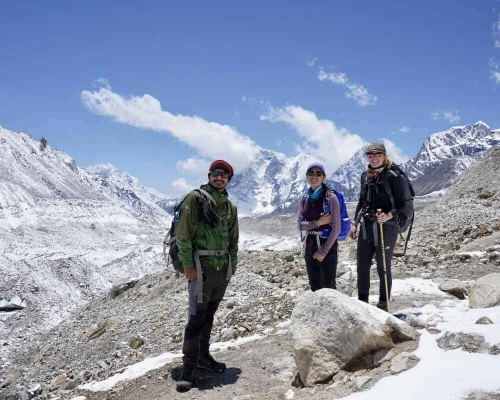
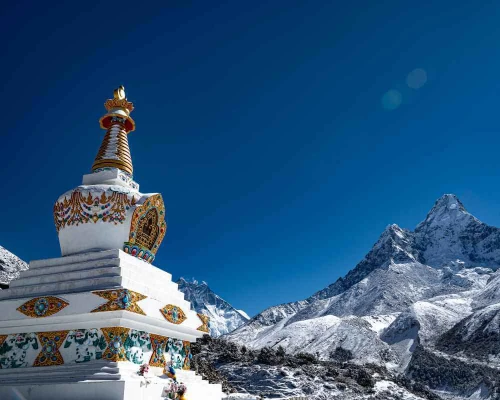
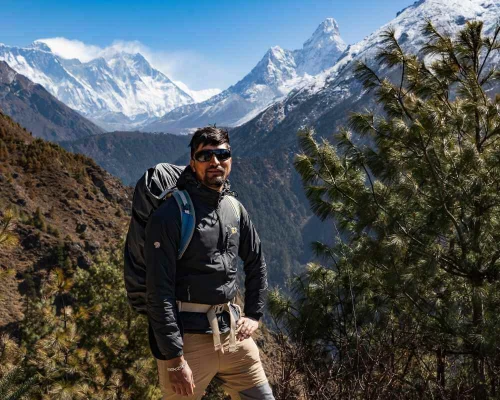
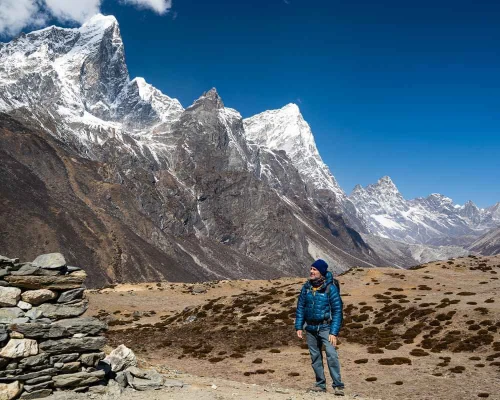
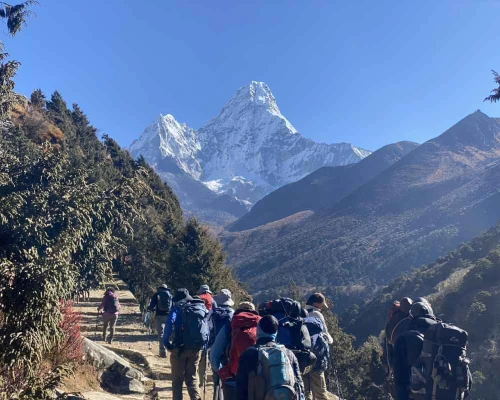
-1.webp)
.webp)

 General
General Upper Body
Upper Body Lower Body
Lower Body Other Essentials
Other Essentials



